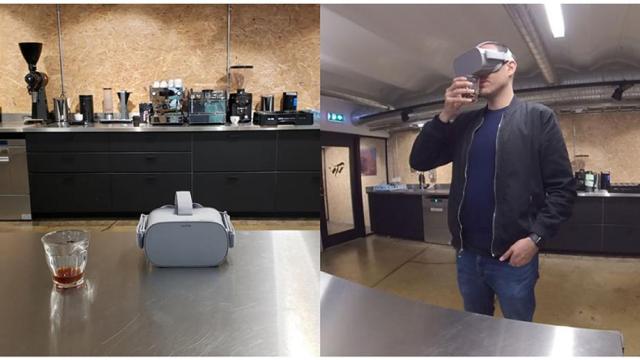It turns out, not all sitting is bad for you

The COVID-19 pandemic has introduced a number of new behaviours into daily routines, like physical distancing, mask-wearing and hand sanitizing. Meanwhile, many old behaviours such as attending events, eating out and seeing friends have been put on hold.
However, one old behaviour that has persisted, and has arguably been amplified due to COVID-19, is sitting — and it is not surprising to see why. Whether sitting during transportation, work, screen time or even meals, everyday environments and activities are tailored nearly exclusively to prolonged sitting. As such, sedentary behaviours, like sitting, make up the vast majority of our waking day.
Pre-COVID-19 estimates place the average Canadian adult’s sedentary behaviour at around 9.5 hours per day. Current daily sedentary time is likely even higher as a result of stay-at-home orders, limitations on businesses and recreational facilities, and elevated health anxieties.
Health vs. well-being
This is a problem, given that chronic excessive levels of sedentary time have been linked to greater risk of diabetes, heart disease, mortality and even some cancers. However, for many people, their own judgments and feelings about their quality of life (also known as subjective well-being) may be more important and relevant for informing their health decisions and behaviours than potentially developing chronic diseases.
Subjective well-being encompasses an individual’s own evaluation of their quality of life. It includes concepts like affect (positive and negative feelings) and life satisfaction. Interestingly, these evaluations can conflict with physical health outcomes. For example, a person could have diabetes but still report good subjective well-being, while someone with no physical health conditions may report poor subjective well-being.
This is important, as it means how an individual feels about their own health may not always align with what their body may demonstrate. That’s why evaluating subjective well-being is vital for painting a holistic picture of health.
Different contexts of sitting
Relatively little research has examined the relationships between sedentary behaviour and subjective well-being. Exploring these relationships is important, as different contexts of sitting — such as socializing versus screen time — may yield different feelings or judgments of subjective well-being, unlike relationships between physical health and sedentary behaviour, which tend to be more consistent.
As health psychologists focused on physical activity and sedentary behaviour, we reviewed the scientific literature describing relationships between measures of sedentary behaviours such as physical inactivity and screen time, and subjective well-being as reflected by affect, life satisfaction and overall subjective well-being.
Our review highlights three main findings. First, sedentary behaviour, physical inactivity and screen time demonstrated weak but statistically significant correlations with subjective well-being. In other words, those who reported sitting more often and spending longer periods with no physical activity reported lower positive affect, higher negative affect and lower life satisfaction than those who sat less and moved more.
We also found that this relationship was most apparent in studies that compared people who were very sedentary to those who had more active lifestyles.
Not all sitting is bad sitting
Our second main finding relates to the context of the sedentary behaviour. While many studies examined overall sedentary behaviour and physical inactivity, some studies looked at specific contexts or domains of sitting and its relationship with subjective well-being. These studies revealed that different domains of sedentary behaviour have unique relationships with subjective well-being.
For example, screen time was consistently and negatively associated with subjective well-being. However, domains like socializing, playing an instrument and reading actually demonstrated positive associations with subjective well-being. These results differ from the traditional health-related sedentary behaviour research, in which all sedentary behaviour is viewed as harmful to health.
Our review suggests that some types of sedentary behaviour may be beneficial to quality of life. Rather, not all sitting is the same in terms of subjective well-being. So when people work towards reducing their sitting time, they should consider not just how much to reduce, but what kind to reduce.
Less sitting is good for everyone
Our third main finding concerns overall sitting and self-perceived levels of sedentary behaviour. Most studies found a weak statistically significant association between higher overall sedentary time and lower subjective well-being. However, in studies where participants were asked to compare their sedentary behaviour to how much they normally sit, those who perceived themselves as more sedentary than usual reported significantly poorer subjective well-being.
These findings suggest that how much an individual sits overall may not be as important as how much an individual sits compared to their usual level of sitting. This infers that anyone, regardless of how much they normally sit or are physically active, may potentially benefit from sitting less.
COVID-19 continues to influence daily life and routines. Even as businesses and gyms eventually reopen, and we feel more comfortable gathering with others and eventually stop wearing masks, we will almost certainly continue to sit and sitting will continue to change how we feel. While we may not be able to eliminate all of our sitting, we can all be mindful of both how much we can reduce it and where we can reduce it from to be healthier and feel better.![]()
Wuyou Sui, Postdoctoral fellow, Behavioural Medicine Lab, School of Exercise Science, Physical & Health Education, University of Victoria and Harry Prapavessis, Professor, Kinesiology, Western University
This article is republished from The Conversation under a Creative Commons license. Read the original article.





